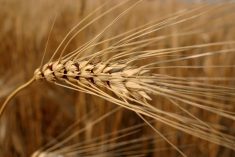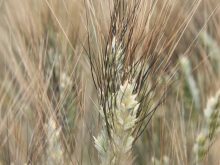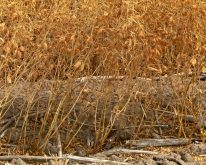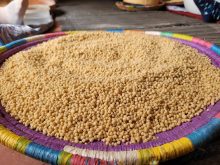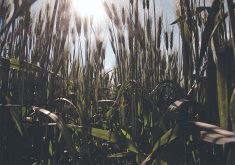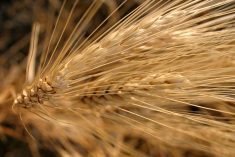SASKATOON — Dry conditions in Turkey are threatening the country’s durum crop.
The Turkish Meteorological Service reports that rainfall from October 2024 to January 2025 was 39.6 per cent lower than the same period the previous year and 28.4 per cent below the 1991-2020 average, according to a story published by Grain Trade.
“The moisture deficit over the past four months could lead to a decrease in the country’s grain harvest for the second year in a row,” stated the story.
Read Also

Exports off to a slow start after last year’s torrid pace
Canadian grain, oilseed and pulse exports are off to a slow start, but there are some bright spots, according to the Canadian Grain Commission’s most recent weekly export data report.
“Crops in the southeastern regions bordering Syria and Iraq, which are the main winter crop growing areas, are the most affected by the drought.”
Rossella Polito, an Italian durum farmer who posts as @spiga_dorata on the X social media platform, said cumulative rainfall maps show that Dec. 1 to Feb. 15 was one of the driest periods in the last 34 years in Southeast Anatolia and Eastern Anatolia.
Those two regions typically account for 30 to 45 percent of the country’s total durum crop, but last year it was more than half.
“Another important area is Central Anatolia, which accounts for about 30 percent or more,” Polito, who is also an independent analyst working in collaboration with Black Silo Commodity Consulting, said in an email.
Conditions are particularly bad in Central Anatolia, where rainfall is down 49 percent.
Turkey has emerged as a major durum producer in recent years, harvesting 4.4 million tonnes of the crop last year, up from 4.3 million tonnes in 2023 and 3.75 million tonnes in 2022.
The reason the crop surged above four million tonnes in recent years is due to increased production in Southeast Anatolia and Eastern Anatolia.
The Turkish Grain Board (TMO) is forecasting a four per cent reduction in durum acres in 2025 following a 5.5 per cent increase last year.
Private analysts are skeptical about that forecast, with some calling for another increase in acreage. Polito thinks acres maybe dropped slightly or remained stable.
The crop was planted in the October 2024 through January 2025 timeframe and is now in the post-germinating and tillering phases of development.
She said there is still plenty of time for the crop to recover before harvest in June-July if it receives timely rain.
Production could range from a disastrous three million tonnes to another four million tonne crop. It is too soon to tell.
Turkey has exported about two million tonnes of durum between the start of summer 2023 and now. That is a lot for a country that never used to be a significant exporter of the crop.
However, exports have slowed, with about 550,000 tonnes shipped so far in 2024-25.
“This decrease in exports is essentially due to internal Turkish Grain Board protectionist policy and new rules introduced this year, resulting in both internal prices and exporting f.o.b. prices too high compared to other competitor countries,” said Polito.
Markets such as Italy have turned to cheaper origins like Greece, Spain and Canada.
TMO has banned imports since last summer to promote consumption of domestic supplies and achieve higher prices for Turkey’s farmers.
Polito expects the ban to stay in place until May unless the drought continues and it appears that domestic supplies will be diminished.
“The big question now is, how much durum stock is left in the hands of TMO,” said Polito.
Some of her sources in Turkey think it could be as high as two million tonnes. If the 2025 crop once again exceeds four million tonnes, that could result in another massive export program, pressuring international prices.
However, if the crop is at the low end of the range, the exportable surplus could be small, and Turkey may even ban exports.
Traders have reported that TMO recently closed a private deal with some international countries to sell about 100,000 tonnes of medium/low quality stocks to Italy and Tunisia.
If TMO continues to sell abroad, that could put a dent in Canada’s sales to the EU, said Polito.
North Africa’s crops are a mixed bag with Tunisia receiving good precipitation and Morocco very dry.
“The bad situation is even irreversible in Morocco, so they should expect a very poor crop like last year and another year of heavy imports ahead,” she said.
Algeria is dry in the west and wet in the east. The country said it wants to be fully self-sufficient in durum production, banning imports starting in 2025. However, Polito doubts that will happen.
Russia’s Ministry of Agriculture is forecasting 2.72 million acres of durum this spring and 1.8 million tonnes of production in 2025.






